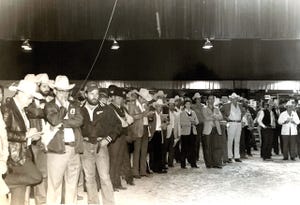Livestock insurance programs updated
RMA revises DRP, LGM and LRP to adjust to evolving needs of livestock producers.
May 5, 2022

USDA updated three key crop insurance options for livestock producers: the Dairy Revenue Protection, Livestock Gross Margin and Livestock Risk Protection. USDA’s Risk Management Agency revised the insurance options to reach more producers, offer greater flexibility for protecting their operations, and ultimately, better meet the needs of the country’s swine, dairy and cattle producers. The updates were published last week for the 2023 crop year, which begins July 1, 2022.
“Great and sound customer service is the most important thing we can provide our nation’s producers, making sure the programs and products we offer give them the most useful tools for covering their risks,” says RMA Administrator Marcia Bunger. “Agriculture is not a static industry, and these updates reflect the importance we place on always knowing the evolving needs of producers and offering the most people the best risk management tools we can.”
These improvements to livestock insurance options build on other efforts by USDA to improve programs for livestock producers. Recently, USDA expanded the Emergency Assistance for Livestock, Honeybees, and Farm-raised Fish to cover transportation costs of livestock to feed as well as feed to livestock. And USDA expanded Dairy Margin Coverage to enable dairy producers to enroll supplemental coverage.
DRP is designed to insure against unexpected declines in the quarterly revenue from milk sales relative to a guaranteed coverage level; LGM protects against the loss of gross margin (or livestock’s market value minus feed costs); and LRP provides protection against price declines.
Producers will now have more flexibility for DRP, LGM and LRP, when indemnities are used to pay premiums, which can help producers manage their operation’s cash flow. With these updates, producers can now have both LGM and LRP policies, although they cannot insure the same class of livestock for the same time period or have the same livestock insured under multiple policies.
Under the Dairy Revenue Protection policies, dairy producers are now able to continue coverage even if they experience a disaster, such as a barn fire, at their operation. In the Livestock Gross Margin, cattle, dairy and swine coverage has been expanded, making it available in all counties in all 50 states.
Under the Livestock Risk Protection program, several changes have been made. Specifically, insurance companies are now required to pay indemnities within 30 days, rather than the previous 60 days, following the receipt of the claim form.
Head limits have been increased with fed cattle at 12,000 head per endorsement and 25,000 head per crop year; feeder cattle at 12,000 head per endorsement and 25,000 head per crop year; and swine at 70,000 head per endorsement and 750,000 head per crop year.
The termination date under LRP has been extended from June 30 to August 31. Location reporting requirements have been relaxed to list only state and county, instead of the precise legal location.
Learn more on RMA’s Livestock Insurance Plans webpage. Crop insurance is sold and delivered solely through private crop insurance agents. A list of crop insurance agents is available at all USDA Service Centers and online at the RMA Agent Locator.
Source: USDA, which is solely responsible for the information provided and is wholly owned by the source. Informa Business Media and all its subsidiaries are not responsible for any of the content contained in this information asset.
About the Author(s)
You May Also Like

.png?width=300&auto=webp&quality=80&disable=upscale)

